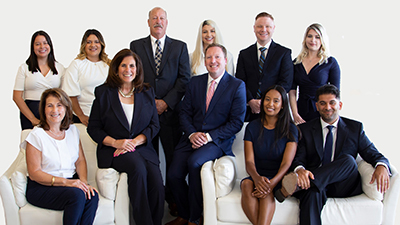Why is it that the most fragile part of our body is the one we seem to protect the least? According to the Washington Eye, it’s estimated that around 2,000 American workers suffer from an eye injury on the job every day. While some of these instancesmay have been freak accidents, at least 90 percent of reported injuries could have been completely avoided by using safety precautions.
Our eyes are not equipped with any natural protection, and it’s very easy for an injury to occur at work. March is Workplace Eye Safety Month, serving as a simple reminder to workers and employers across all occupations to be mindful of the dangers when it comes to eye safety. These are some of the eye hazards to watch for and how to keep employees safe.
Types of Eye Hazards
Any negative impact on the eyes can change a worker’s overall quality of life. There are various possible hazards in the workplace that could lead to eye injuries across multiple industries, including:
Flying objects, chemicals, tools, particles, and harmful radiation are among the most common causes of occupational eye injuries. Sadly, most of these injuries are also highly preventable when proper safety measures are used.
Protective Gear for Eyes
The American Optometric Association (A.O.A.) reports that workers experience eye injuries for two reasons: they were not wearing eye protection, and/or they were wearing the wrong kind of protection for the job. Various types of eye protectionthat can be used to protect workers from occupational eye injuries include:
Wearing just any type of eye protection will not prevent a worker from an injury. Protective eyewear must be kept in good condition and replaced immediately when damaged. The type of eye protection needed will depend on the kind of work being done. Additionally, all protective eyewear should be compliant according to the Occupational Safety and Health Administration(O.S.H.A.) regulations to fully protect workers from preventable harm.
Industries Where Eye Injuries Are Common
It’s often believed that eye injuries only occur in construction or trade jobs. But, research shows that about 40 percent of work-related eye injuries happen in offices, laboratories, and other work environments alike. According to Bard Optical, these are the seven identified professions where eye injuries occur the most and the hazards they face in the workplace:
No matter the severity or degree of harm, it’s always better to be safe than sorry. No one wants to live a life where their vision can be impaired or endure a lifetime of recovery and constant medical attention. Employees must be aware of how to take the necessary precautions and be aware of the known eye hazards they could encounter in every aspect of the workplace.
Ten Steps to Prevent Eye Injury
Prevent Blindness, a leading eye health and safety organization, provides a great deal of insight into helping workplaces across the country embrace Workplace Eye Safety Month. Here are ten recommendations to help workplaces focus on reducing occupational eye injuries affecting their employees:
Assess: Inspect and identify all work areas, equipment, plant operations, and access routes for hazards.
Test: Routine employee physical exams are a perfect opportunity to test eye vision. Corrected eye vision (if needed), reduces accidents.
Protect: Using the correct protective eyewear is crucial. Follow the industry standards and expert recommendations for ensuring employees are wearing the right gear for the job every time.
Fit: With a great emphasis on protective eyewear, it’s important that all employees have eyewear that fits correctly and comfortably. Use a trained professional to fit and repair gear as needed.
Participate: Specific programs for eye protection in all departments should be mandatory. If there are none in place, they should be created and made accessible to all employees.
Educate: Educational programs are essential to keeping any work environment safe. Employers should be educating all supervisors and employees consistently.
Plan for Emergencies: First-aid procedures should be set in place. Eyewash stations should be installed in areas with risks for debris and chemical splashes. Workers should be trained in basic first-aid and able to identify which safety methods to use when eye injuries occur.
Support: Management should be highly involved and show an active interest in their employees’ well-being.
Review: Review all prevention policies on a regular basis to identify new hazards or training areas of need.
Put it in Writing: Write down all safety procedures, policies, and programs for the workplace and make them accessible to employees who need to reference them in the future.
Connecticut Workplace Accident Attorneys
Eye injuries in the workplace can be dramatically reduced when proper safety protocols are set in place. Employers and contractors who do not prioritize safety put the lives of their workers at unnecessary risk. If you or a loved one has been injured due to the medical negligence of a health care facility or physician, you may be eligible to receive compensation for any damages suffered.
As Connecticut personal injury experts, we always have your best interests and safety in mind. Our aggressive attorneys at Jacobs & Wallace will help you fight back by providing a free case evaluation to explore all your options for seeking justice against reckless distracted drivers. Contact us today for a free consultation and to explore your rights for justice.


